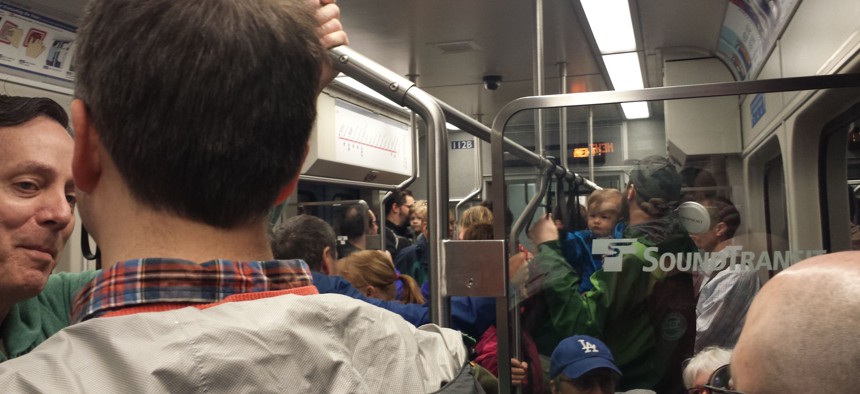Connecting state and local government leaders
The Emerald City should be very proud of its new Link light-rail subway extension, now open for service. But as Seattle continues to expand its regional transportation infrastructure, other cities have been struggling to maintain their older transit networks.
SEATTLE — When a Sound Transit light-rail train pulled into the newly opened Capitol Hill Station on Sunday afternoon, a cluster of people stood along the underground platform with their cameraphones out and ready to capture the transit vehicle gliding along the tracks. Others clapped. There were plenty of big smiles, too.
It was the second day of passenger service for the long-awaited 3.15-mile, $1.8 billion University Link light-rail subway extension connecting downtown Seattle with the Capitol Hill neighborhood and the University of Washington.
For traffic-clogged Seattle, the opening of this transit connection has been a long time coming.
While the construction of U Link’s tunnels and stations took seven years—and, impressively, came in about $200 million under budget and six months ahead of schedule —generations of Seattleites have been waiting an eternity for a rapid transit system connecting downtown with the university (and elsewhere).
Many long-time residents regret the failed votes in 1968 and 1970 on proposals for a subway system. The federal funding that would have built Seattle’s subway went to construct the MARTA system in Atlanta instead, a sore spot for locals when discussing the Puget Sound region’s transportation needs over the years.
Subsequent efforts to bring rapid transit to Seattle, including an ultimately doomed and unfeasible plan to build an extensive monorail system, fell apart.
As Portland, Oregon, was building its now-expansive MAX light-rail network, the largest transit improvement that got built in Seattle was the 1.3 mile Downtown Seattle Transit Tunnel , which has been used to funnel King County Metro buses through the city center. It was adapted for use by light-rail trains in the mid 2000s.
In a recent guest article on Seattle Transit Blog , former Mayor Greg Nickels reflected on the “prickly history of our region’s debate, its starts and stops, and the challenge of building consensus on our path to light rail.” Eventually, plans for the Sound Transit Link light-rail system emerged from the years of consternation over how to move forward.
While the first 24-mile section of Link system opened between Seattle-Tacoma International Airport and downtown Seattle in 2009, the connection to the University of Washington’s flagship campus—one of the area’s largest employers and hubs of activity—is what many residents and civic leaders have really been waiting for.
In the worst traffic conditions, the trip between the university and downtown can sometimes take upwards of an hour by bus or car on Seattle’s topographically-constrained network of surface streets.
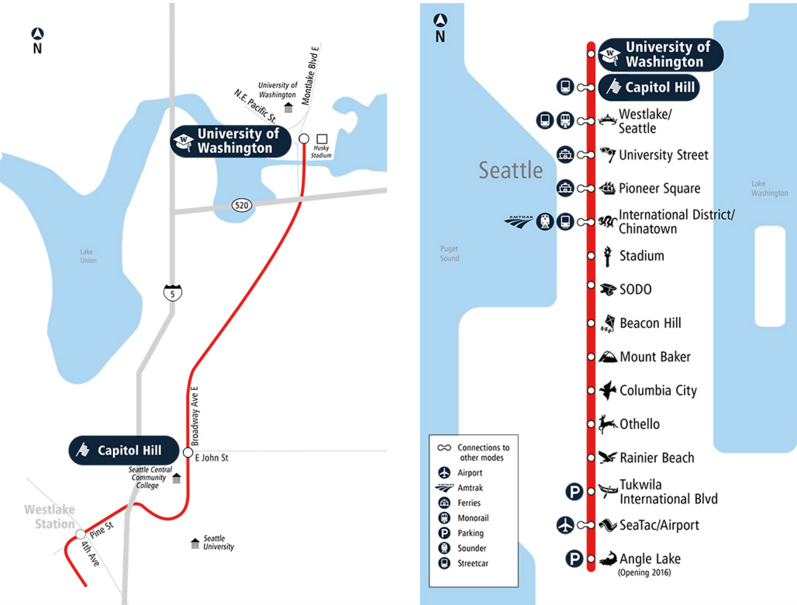
With U Link, Sound Transit’s light-rail trains can do it in about eight minutes via the new tunnels that pass under the Montlake and Capitol Hill neighborhoods. The trip by train from the Westlake Station downtown up to the Capitol Hill Station takes about two minutes.
On the first day of passenger service, The Stranger wrote that using Link “felt like jumping across, collapsing the spaces of, a big city.”
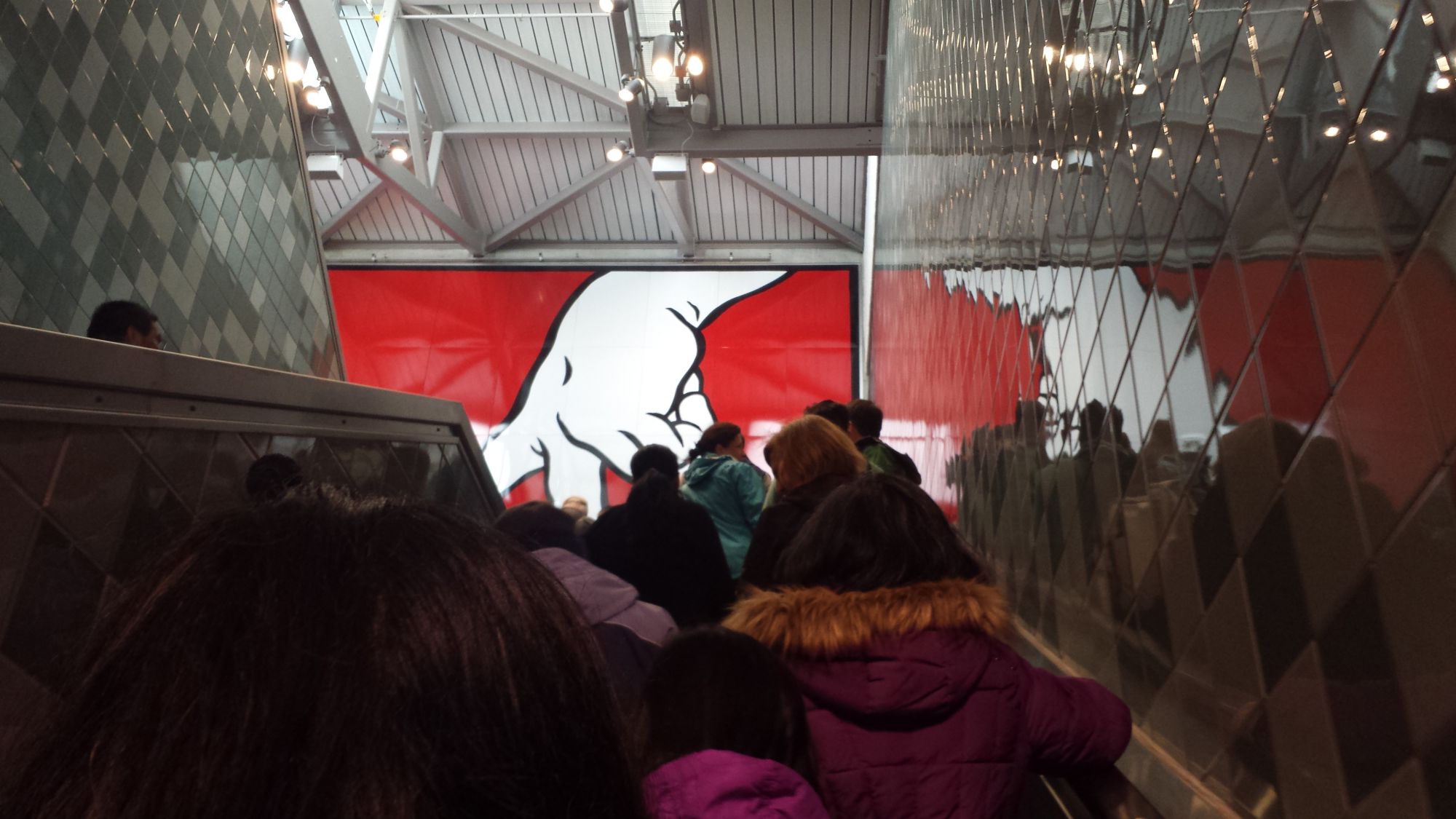
Local news website Crosscut recently wrote that in “ a city of lovable transit losers ,” the opening of U Link represents “a rare victory” and asked if Seattle was “breaking its failure streak.”
In many ways, the answer is an affirmative yes. And the rapidly growing city and greater Puget Sound region isn’t looking back.
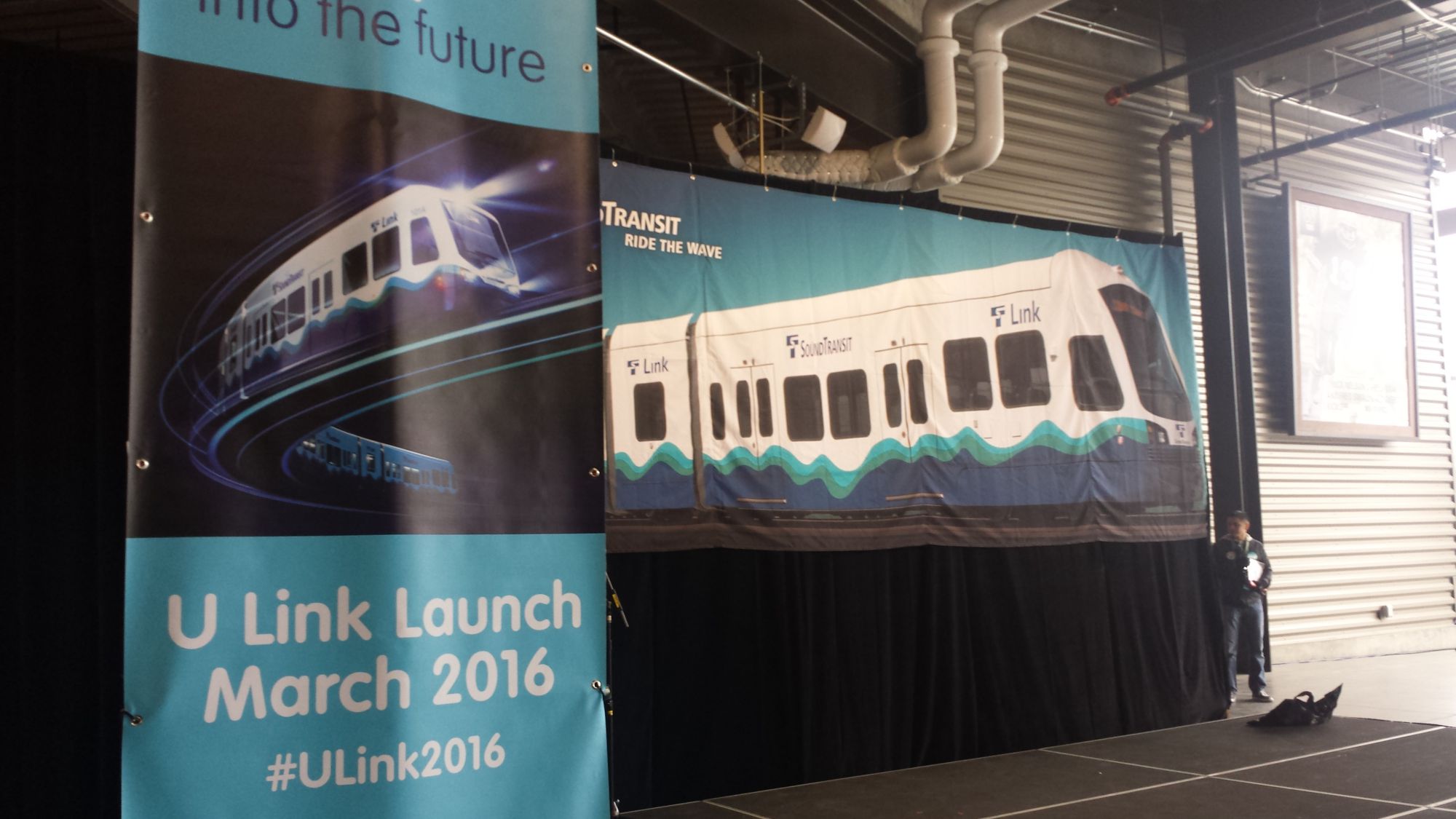
During Saturday’s official ribbon-cutting ceremony to initiate U Link service, which included bursts of confetti cannons and all-day street festival outside the Capitol Hill Station, Seattle Mayor Ed Murray said: “Let’s take a ride and change Seattle.”
Dow Constantine , the King County executive and chairman of the multi-county Sound Transit Board, told KING-TV that U Link “ is going to revolutionize the way we travel around in this region .”
And indeed it has.
On Monday, the first workday with U Link, Route Fifty found that the new Link stations bustling with commuters during the peak morning and afternoon travel periods. Those passengers would have normally crammed onto buses navigating Seattle’s congested streets.
Article continues below ...
PM peak commute to Capitol Hill. It's like it's always been here. #Ulink2016 pic.twitter.com/poQSK1A51o
— Seattle Transit Blog (@SeaTransitBlog) March 22, 2016
King County Metro’s network of bus, trolleybus and RapidRide bus rapid transit routes will continue to play a critical role moving people within Seattle and its suburbs. The Seattle Streetcar’s expansion via the future Center City Connector corridor will connect two existing lines. But it’s the completion and opening of U Link that’s the real gamechanger when it comes to improvements in urban mobility in Seattle.
The Link light-rail system is expanding beyond its new University of Washington connection. By 2021, it is expected to reach Northgate through a 4.3 mile extension .
According to current Sound Transit planning timelines, by 2023, Link will continue northward via the 8.5-mile-long Lynnwood extension , eastward from Seattle to Bellevue and Redmond via a 14-mile line that will cross Lake Washington and southward to Kent and Des Moines .
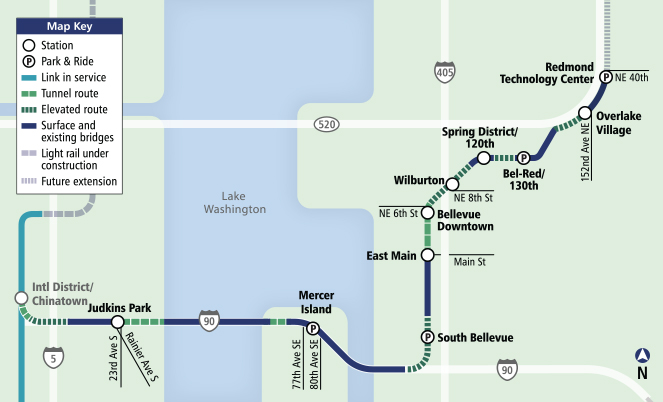
The Sound Transit 2 transit plan approved by voters in 2008 authorized the funding of those extensions—and other transportation improvements—and is set to grow the Link light-rail network to 50 miles.
Planned light rail extensions and continued development adjacent to Link stations is poised to send Link’s growing ridership soaring in the years to come.
This fall, voters in the central Puget Sound region will vote on a Sound Transit 3 expansion package , which is proposing to expand the light-rail system to Everett and Tacoma plus add additional track mileage in Seattle’s suburbs east of Lake Washington.
And for Seattle itself, Sound Transit is planning for a second downtown transit tunnel, plus connections to West Seattle and Ballard—which like many areas of the city, are experiencing high levels of growth.
The Sound Transit Board is working to finalize its ST3 proposal. A draft plan is expected on Thursday , according to Seattle Transit Blog . The agency is authorized by the Washington state legislature to raise up to $15 billion over 15 years through new tax increases if voters approve the measure.
A lot is at stake, especially for the city of Seattle, which is among the nation’s fastest growing cities. ST3’s failure would mean that badly needed high-capacity transit connections to Ballard and West Seattle would be put on ice for another day. As the regional Link network grows and more and more trains are funneled through the Downtown Seattle Transit Tunnel, a second underground route through the city’s core will be needed to give the Link system more capacity and reduce pressure on the lone downtown tunnel.
Sound Transit personnel were out in full force at the U Link opening festivities on Saturday passing out promotional materials about what could come if voters approve the ST3 measure in November.
Expect that ST3 push to continue from the region’s leaders through Election Day.
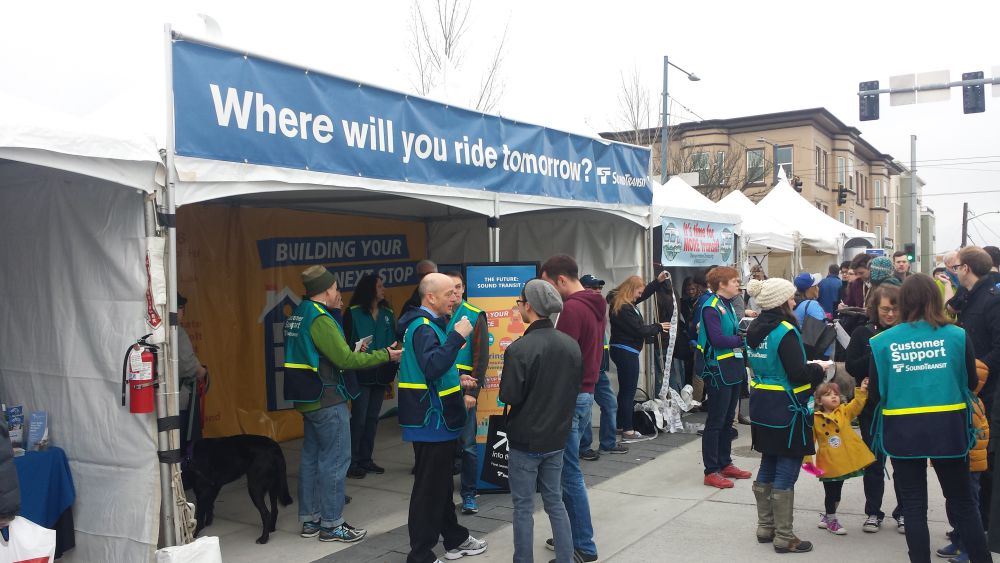
Transit advocates have by and large rallied behind Sound Transit 3 with some, including the Seattle Subway coalition , pushing for even more investment within Seattle—including an east-west link between Ballard and the University of Washington, currently one of the city’s most sluggish and heavily traveled crosstown bus corridors.
Although there are lots of options and variables still at play, the vision for the final ST3 package is beginning to emerge. (A future expanded Link network could look something like this , according to Seattle Transit Blog .)
As the plan is finalized, transit advocates likely won’t get everything that they want, especially those who want to see more investment within Seattle instead of in suburban areas. Stay tuned ...
In the meantime, It’s hard for anyone to deny that it’s an exciting time for Seattle when it comes to public transportation.
But it’s also a frustrating time for infrastructure locally. Down on Seattle’s waterfront, the problematic “Bertha” tunnel boring machine is back in action digging a tunnel to replace the seismically vulnerable State Route 99 / Alaskan Way Viaduct has been attracting years of unfavorable headlines. Progress has been slow going on that tunneling project, which is overseen by the Washington State Department of Transportation.
To date, Sound Transit’s Link tunneling projects have been by comparison relatively problem free. When Pamela, one of the tunnel boring machines digging Link’s Northgate extension, encountered problems this winter , Seattle Transit Blog wrote:
[I]t absolutely cannot be stressed enough how this situation differs from any tempting comparison to Bertha and the waterfront tunnel project, both in structural characteristics and in responsible project management.”
Those construction issues are a reminder that large infrastructure projects are challenging and complex.
Meanwhile, Back East in the Other Washington …
The opening of U Link in Seattle should also be a reminder that despite how new the extension looks and feels, in 30 or 40 years, all that infrastructure will age, encounter problems and need costly maintenance and upgrades.
Ribbon cuttings for new transit projects, like the one on Saturday in Seattle, the extension of Los Angeles Metro’s Gold Line a few weeks ago or Denver’s forthcoming airport rail line opening , are always celebratory occasions.
But long term, it can be hard to get excited about the important infrastructure maintenance nuts-and-bolts needs like replacing track switches, upgrading technical systems and regular safety inspections.
Plenty of U.S. cities, particularly on the East Coast, offer cautionary tales of when investment in transportation infrastructure doesn’t meet the needs to sustain that infrastructure for the long haul.
Washington, D.C.’s Metrorail is, right now, the most visible example of a system struggling to maintain its infrastructure and the goodwill of its commuters—which is currently in short supply in and around the nation’s capital.
Paul Wiedefeld, the general manager of the Washington Metropolitan Area Transit Authority , surprised many when he announced an emergency closure of the entire Metrorail system for an entire weekday .
“When I say safety is our highest priority, I mean it. That sometimes means making tough, unpopular decisions, and this is one of those, for sure. I fully recognize the hardship this will cause.” Wiedefeld said at a March 15 press conference to discuss the emergency closure .
The reason for the sudden regional disruption in the D.C. area?
WMATA needed to conduct systemwide safety inspections of power cables. Previous failures of those power cables have led to incidents involving small fires and smoke. One passenger died in January 2015 on a smoke-filled a Yellow Line train when the tunnel failed to vent properly .
The recent emergency inspections that shuttered the Metrorail system found a handful of critical failures in some electrical cables, which were repaired.
Federal officials have cited WMATA for a lax safety culture and other operational problems stemming from the various investigations that followed the deadly 2009 Red Line train collision and derailment , which killed nine passengers. There have been other Metrorail derailments, too, not to mention numerous rush hour disruptions that can send commuters scrambling to find alternate travel options or work remotely. The Federal Transit Administration was given safety oversight responsibility for WMATA in October 2015.
Extensive track maintenance and rehabilitation work has caused regular Metrorail service disruptions, especially on weekends when train frequency is often reduced to every 25 minutes on lines.
Not surprisingly, Metrorail ridership has decreased as well.
For an agency that is in many ways still recovering from the deadly 2009 Red Line crash, last week’s systemwide Metrorail emergency closure was an especially tough blow to take.
Philip Kennicott, The Washington Post ’s Pulitzer Prize winning art and architecture critic lamented the day of the Metrorail closure:
The truly terrifying thing about our slow acculturation to decay in the built environment is that it’s reaching crisis at the same moment that many Americans are entranced by one of this country’s most serious flirtations with authoritarianism. The response to earlier crises in the man-made world was: Everything is falling apart, so how do we fix it? Today, there is a more ominous question lurking in the background: Can no one make the trains run on time?
When the first sections of the Metrorail system opened in the 1970s and ’80s, WMATA’s state-of-the-art rapid transit network was a rising star as older legacy urban rail systems in Boston, New York City, Philadelphia and Chicago were struggling to keep their trains running and systems in good working order.
But deferred maintenance, mismanagement and fiscal difficulties caught up with WMATA and the agency is currently in a tough fight to not fall into what’s been described as a “ death spiral .”
In a recent open letter about WMATA’s challenges , Wiedefeld said that “turning Metro around requires us to confront some hard truths.”
The nation’s capital is not alone when it comes to the struggles to maintain its transportation infrastructure. It’s a common theme in the world of American infrastructure.
In California, a social media manager for the Bay Area Rapid Transit agency has been the subject of a lot of attention for a blunt and sobering response to a customer’s complaint about recent system disruptions: “ BART was built to transport far fewer people, and much of our system has reached the end of its useful life. This is our reality .”
@shakatron BART was built to transport far fewer people, and much of our system has reached the end of its useful life. This is our reality.
— SFBART (@SFBART) March 17, 2016
Article continues below ...
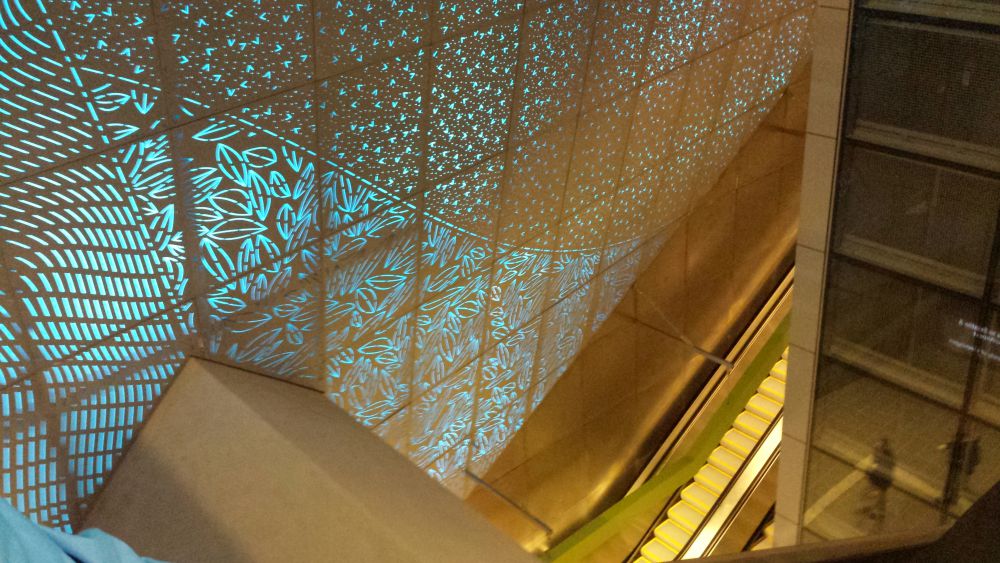
So here’s an important to thing to keep in mind for cities lucky enough to be expanding their transit networks, like Seattle: Escalators and elevators will break down and will need to be fixed and replaced periodically. Train systems will fail from time to time. Service will be disrupted. Bus bridges will be scrambled to shuttle passengers around those disruptions.
All those things are inevitable. It goes with the territory for any experienced transportation management team.
Well-managed agencies can plan for those future situations and respond effectively. Well-managed agencies also know how to effectively harness goodwill. Unlike in D.C., there’s a lot of goodwill right now for Seattle’s current transit expansion and potential future network expansions. Many regions would love to have that same kind of goodwill and the ability to execute on a big transportation and mobility vision that will lay the foundation for the future.
Michael Grass is Executive Editor of Government Executive’s Route Fifty and the founding co-editor of DCist. He previously wrote about D.C.-area transit and local news for The Washington Post’s Express, Washington City Paper and The Huffington Post. In 2002, he worked as a communications consultant on a Federal Transit Administration emergency management program bringing together transit agencies with their first responder communities and intergovernmental stakeholders.

NEXT STORY: Watch a House-Sized Boulder Get Blown Up in Idaho
